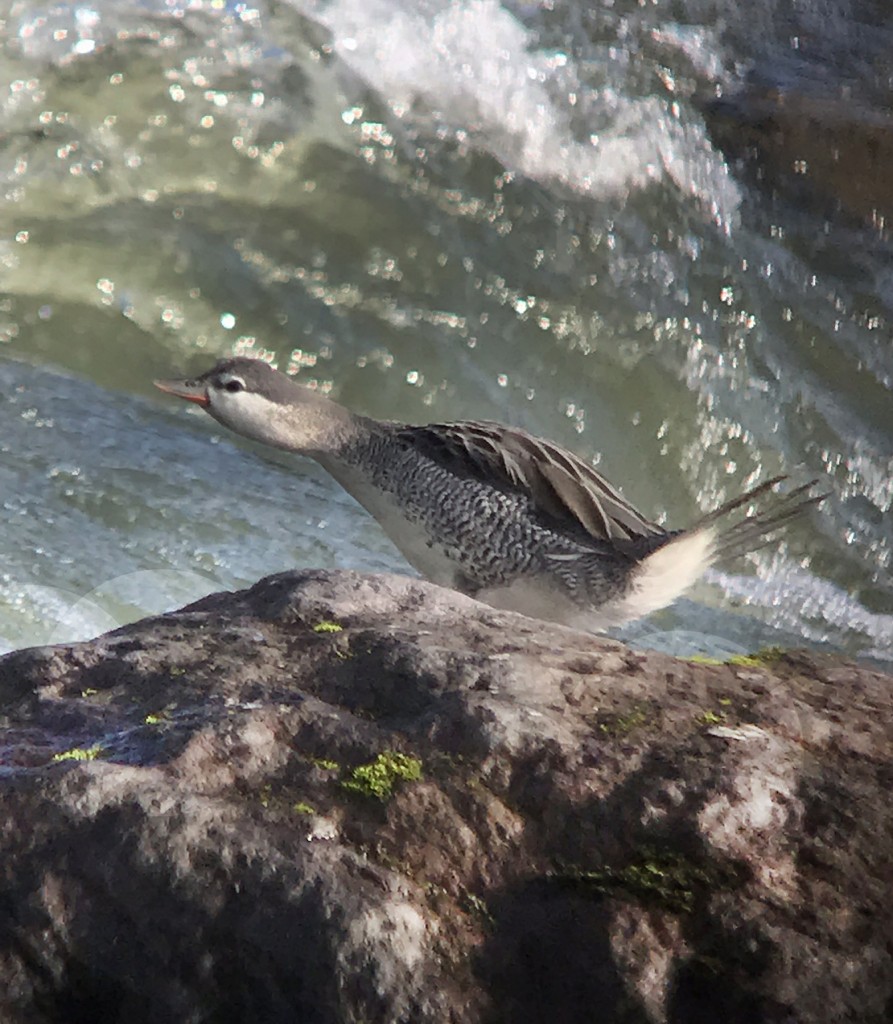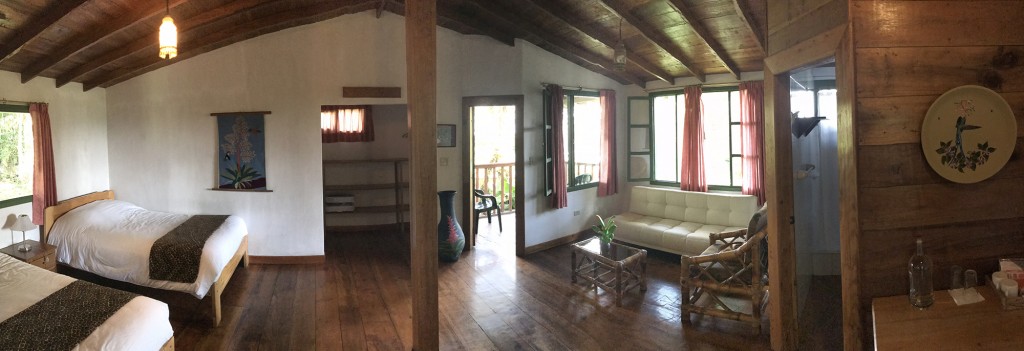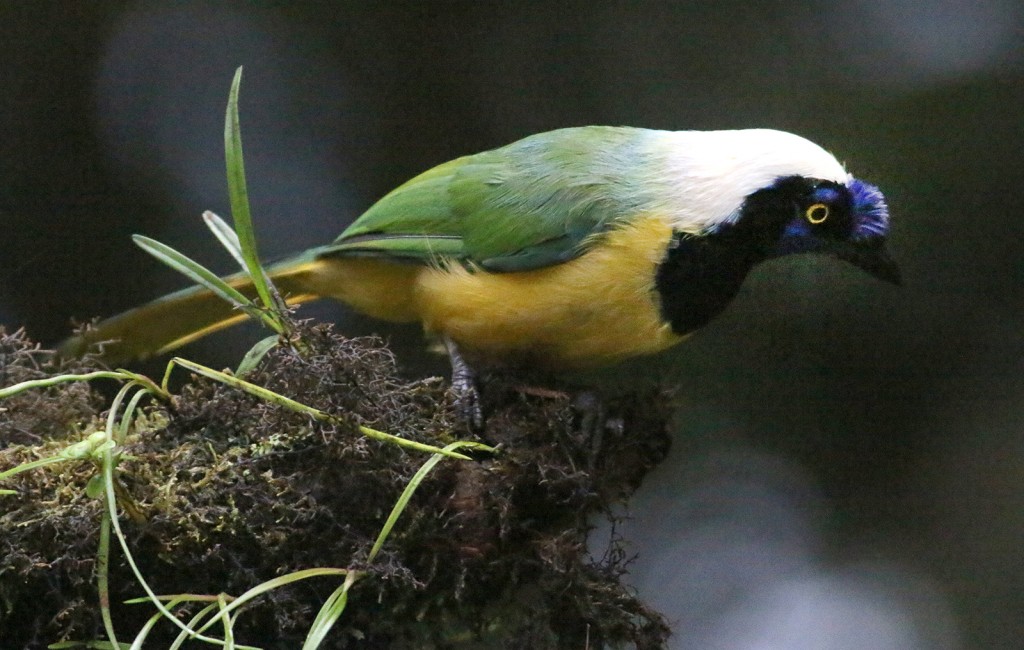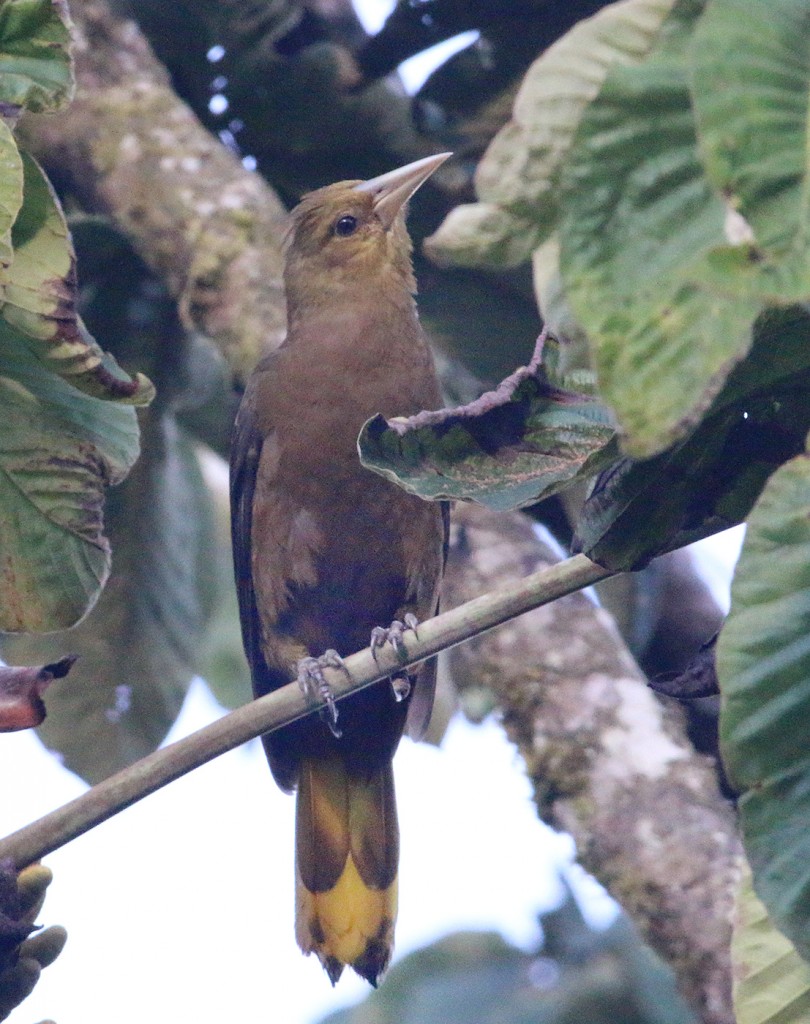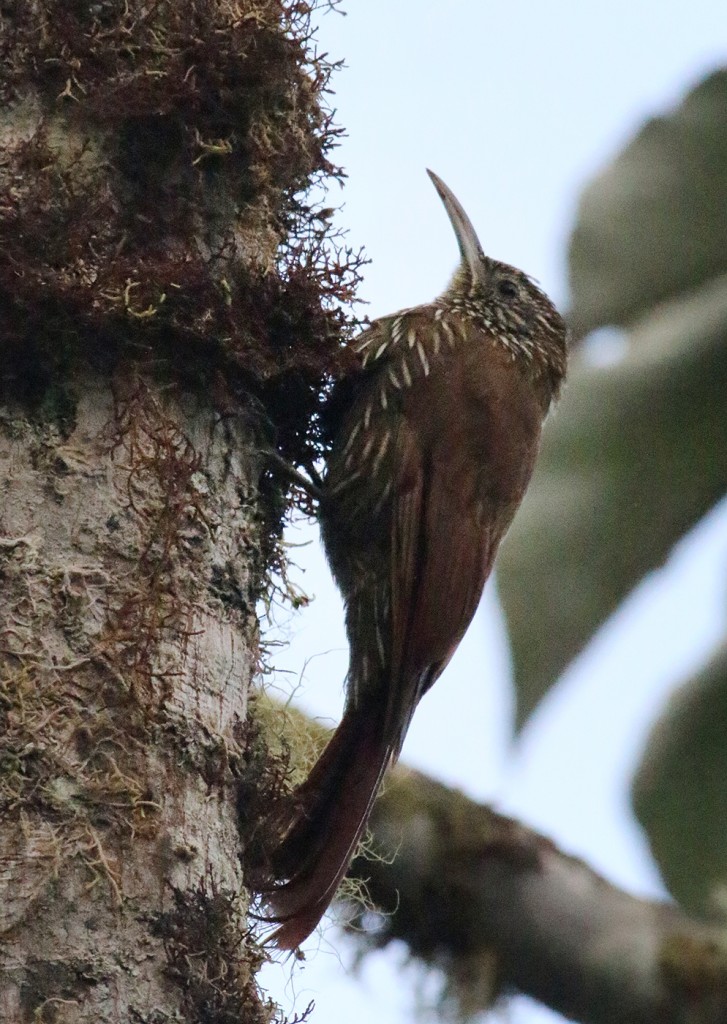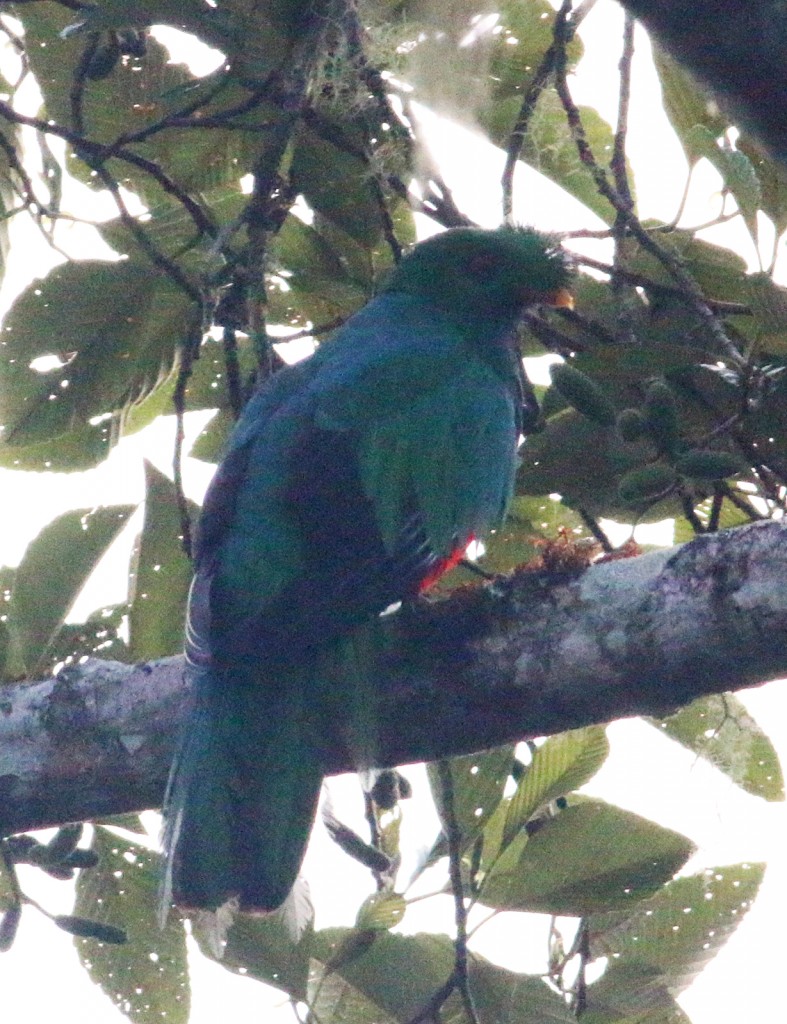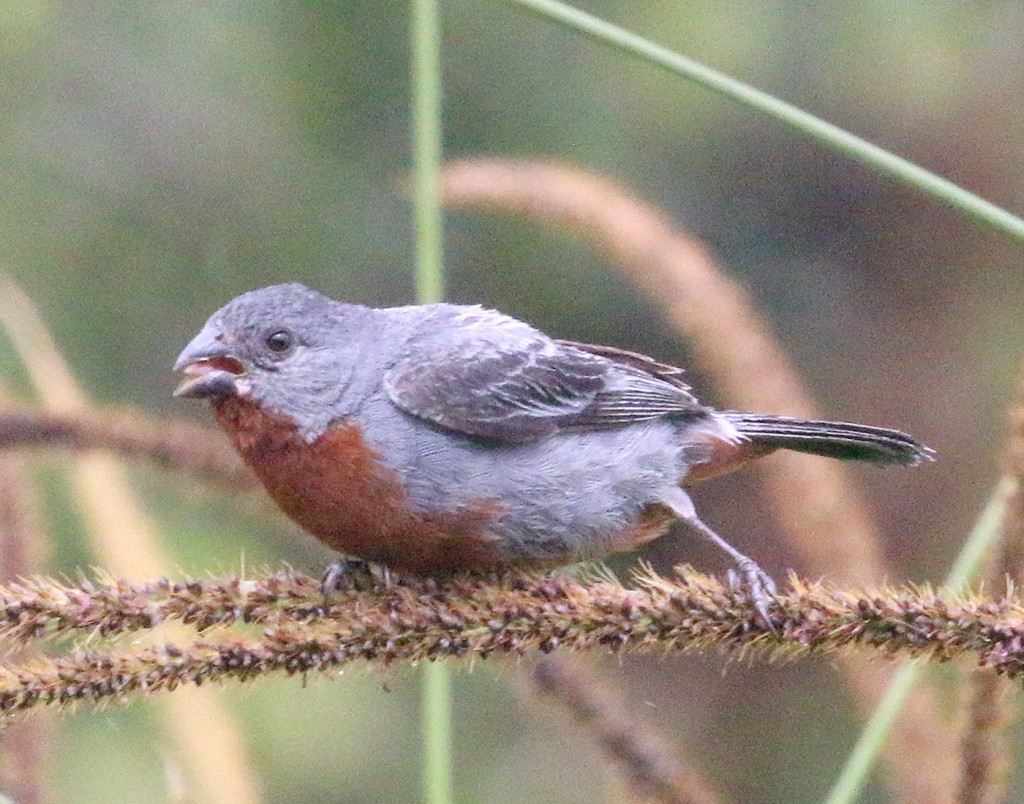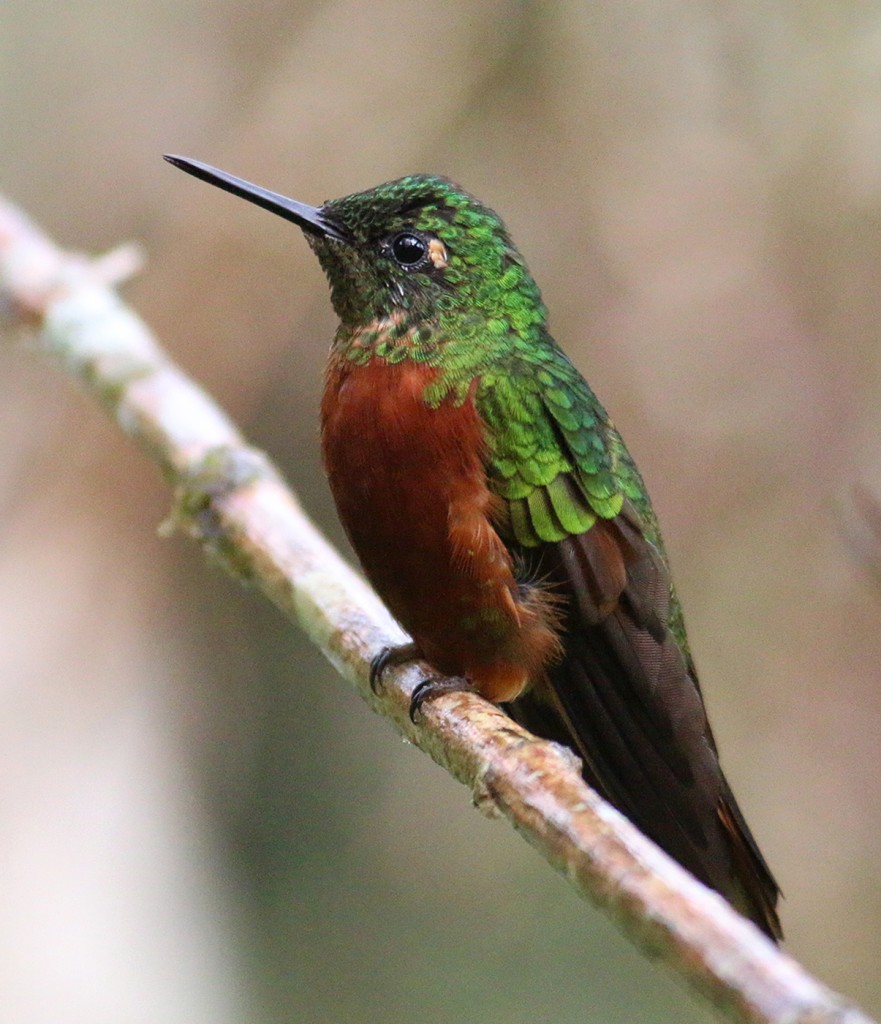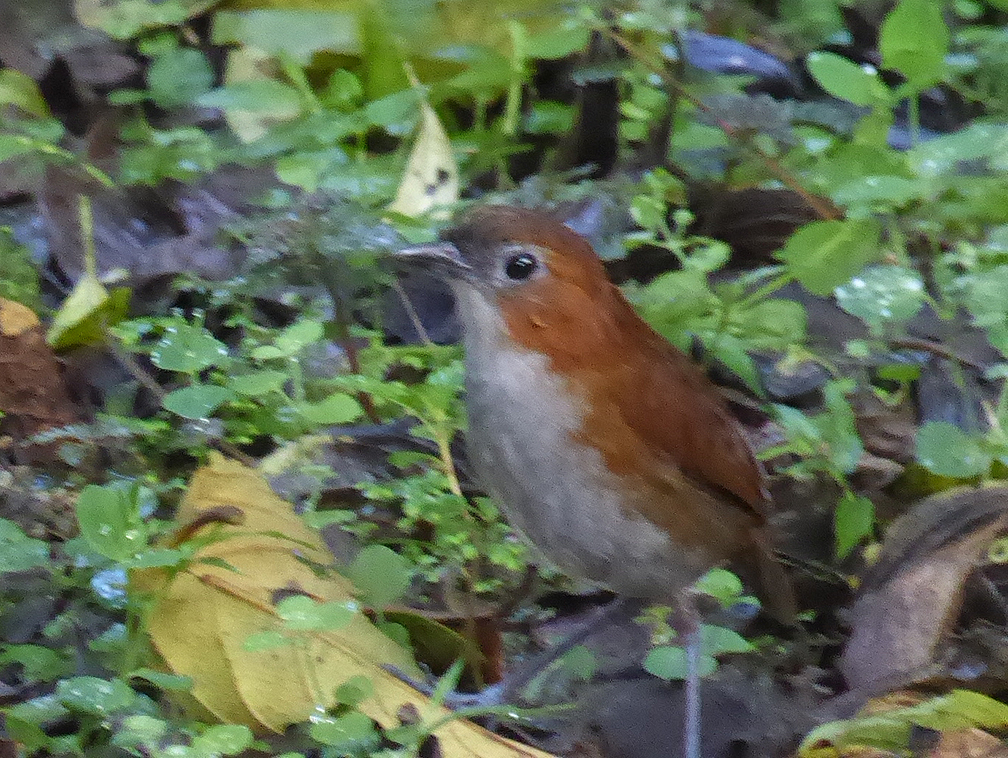After spending two days in the lowlands, we were prepared to head back upslope to what is perhaps THE go-to birding lodge on the east slope, Cabañas San Isidro. San Isidro is located at 6,800 ft, just a mile or two from the village of Cosanga. On our way upslope we continued our quest to find a Fasciated Tiger-heron, stopping at nearly every convenient river access, but to no avail. Nearly every stop yielded the requisite Black Phoebes and occasional Torrent Tyrannulets, and at one location we happened upon the most cooperative Torrent Duck. It seems that most ‘good’ birds drift away from us after they are spotted, but this bird kept feeding and coming closer and closer and closer, delivering a lengthy exhibition of Torrent Duck feeding behavior. Diving in and out of these raging rivers, including swimming upstream, has to be a tough way to earn a meal.
It was great returning back to San Isidro. I had been here seven years ago, on my first-ever trip to Ecuador. Interestingly, I could even remember which cabin brother Rich and I occupied on that trip and where we spotted specific birds. It will forever be a mystery to me how I can remember where I saw my first and only Chestnut-bellied Thrush seven years ago, but now I can’t remember the name of a person that I met 10 minutes ago. Our cabin at San Isidro was spacious, with a private balcony and nice view. The grounds immediately surrounding the cabins are fairly level and sparsely vegetated, making it relatively convenient to find the birds. Our routine at San Isidro was to meet at 6:15AM near the lightpost, which draws in insects that the birds feed upon at first light. Montane and Olive-backed Woodcreepers, Inca Jays, Russet-backed Oropendolas, Crested Quetzal, Smoke-colored Pewee, Cinnamon Flycatcher, and Black-eared Hemispingus were found each morning. After breakfast and in the afternoons we would either stroll down Las Caucheras Road (the entry road from the highway), or sit by the hummingbird feeders, or walk down one of the trails. We enjoyed seeing Bluish Flowerpiercer, Azara’s Spinetails, Mountain Wren, Handsome Flycatcher, Powerful Woodpecker, and mixed flocks that included Beryl-spangled and Saffron-crowned Tanagers, which were all new species for our trip. New hummingbirds for the trip included Bronzy and Collared Incas, Chestnut-breasted Coronet, and Fawn-breasted Brilliant. One morning we spotted a pair of large raptors soaring above the ridgeline, and after consulting the field guide realized that we were viewing our first Black-and-chestnut Eagles. It sure would have been nice to have our scopes with us then.
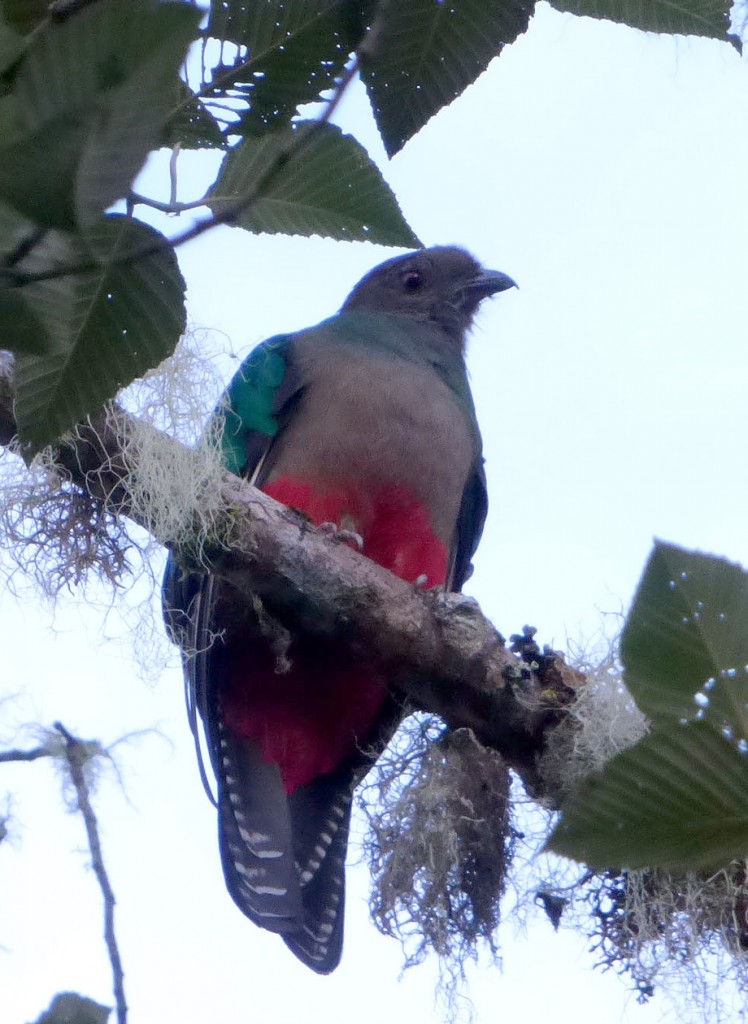
The female Crested Quetzal, with her brown bill, brown head, and belly that is half red and half gray. Photo by Jeanine Apgar.
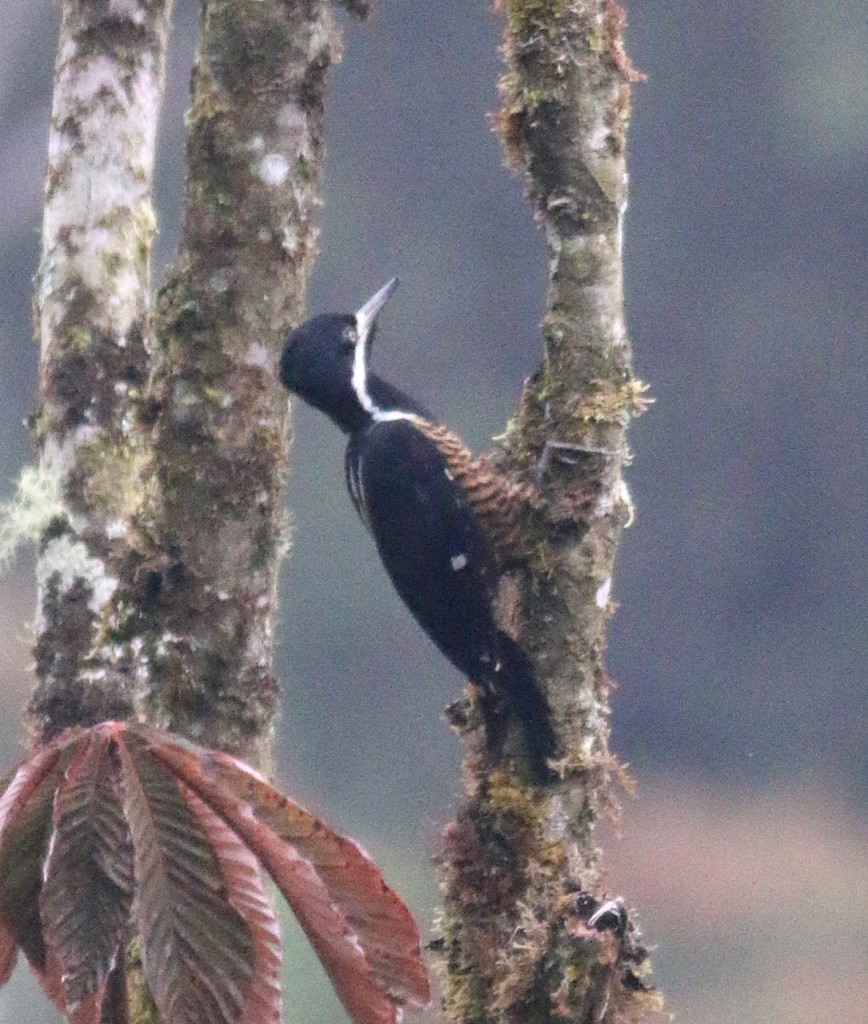
A female Powerful Woodpecker appeared while we were looking at tanagers. The female is very distinctive, with its brown-and-black barred belly.
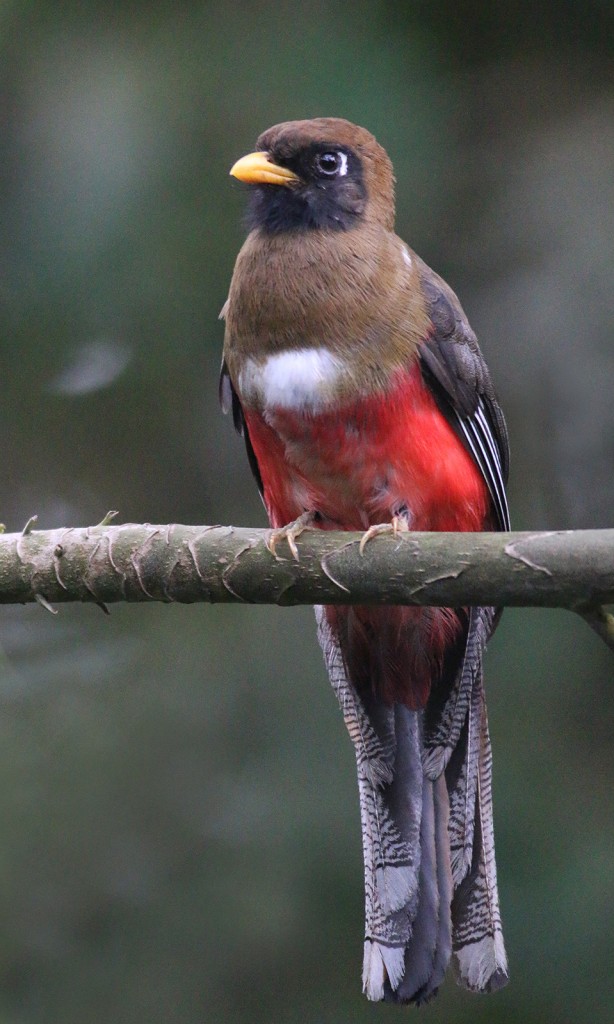
This female Masked Trogon flew in at eye level so close to us that I had to back up to get her in focus.
We were trying to cut down on the big lunches, so on two days we drove the two or three miles down to Cosanga, where we found a small cafe that served great sopas. It was perfect…a large and light but tasty bowl of delicious homemade soup with great veggies and a chunk-o-chicken. A great lunch for $1. Try getting that in the US. After lunch we stopped by the Cosanga bridge (still searching for Fasciated Tiger-herons and more), and in the nearby field a spirited game of futbol was occurring in the rain. What great fun watching them all slide around in the mud, with much of the town in attendance. Between the field and the river we found cooperative Chestnut-bellied Seedeaters and Torrent Tyrannulets. It was a great afternoon of easy birding and sampling the local culture.
Like most of the birding lodges, San Isidro has an antpitta feeding station, where they attract White-breasted Antpitta. We went to the station on our first morning there as the guide tried whistling in a nearby calling antpitta, but it never came any closer, so that was a bust. The next day Jeanine and I had experienced enough of the antpitta circus, so we were birding elsewhere that morning, but Pete attended and was able to get good looks and a photo of the antpitta. Just our luck to pick the wrong day. But we went down to that area shortly afterward, and the antpitta still was singing its repetitive three-note call. I tried to imitate it in desperation, and surprisingly the bird came closer! I whistled again, and it appeared on the edge of the feeding area. Wow! Now THAT was unexpected…Greg the antpitta whistler.
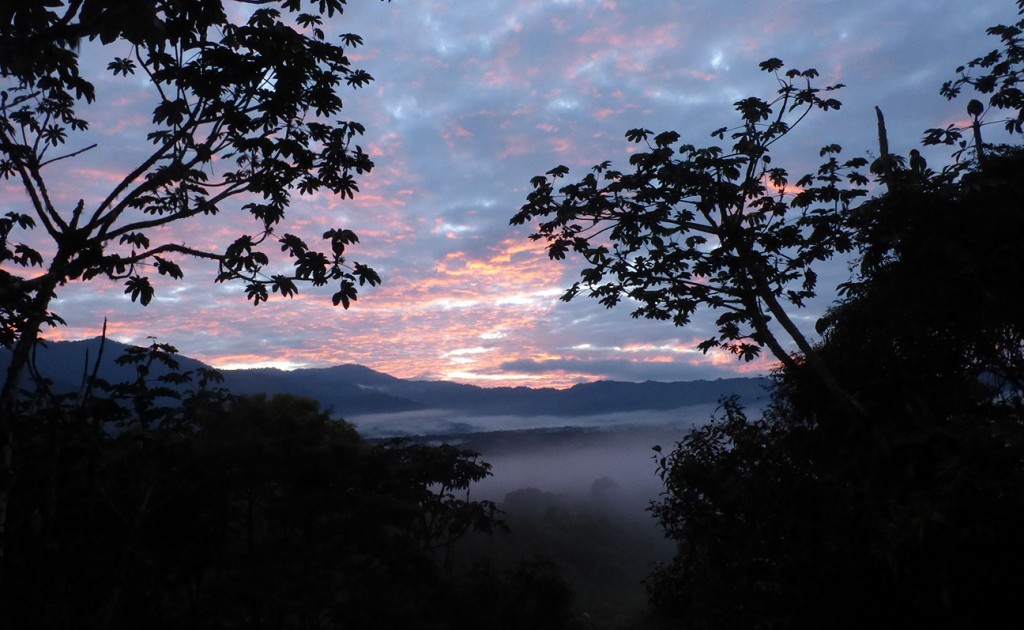
A nice sunset from the rooftop lookout above the entertainment building at San Isidro, looking toward Guacamayos Ridge.
I should mention two things about San Isidro that impressed me this time around. First of all, the quality of their food preparation seemed to be a level above the other lodges. Well done, Alejandro and staff. Second, they now have a covered pool area on the hillside. It is not really very hot here, but this could be a great place to just relax (I hear that the pool is slightly heated) with a short dip as a welcome change of pace. One minor letdown at San Isidro is that the Cock-of-the-Rock lek that used to be on the grounds is no longer active, but we already saw them at Narupa Reserve, so it was not such a great loss for us.
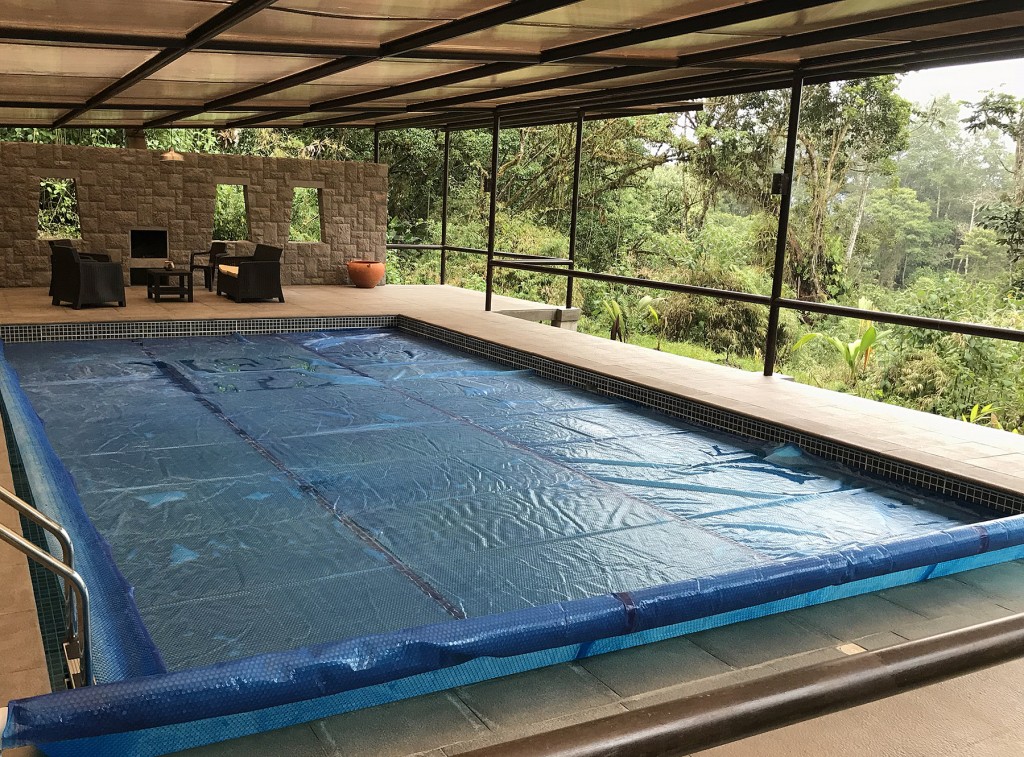
The new pool at San Isidro. It’s a nice touch, being covered, but still having an open modern architectural feel and a nice view of the hillside. I wish we found some time to use it. This amenity would be great if you are traveling with a non-birding partner.
Next stop: heading further upslope to Guango Lodge and Papallacta.
